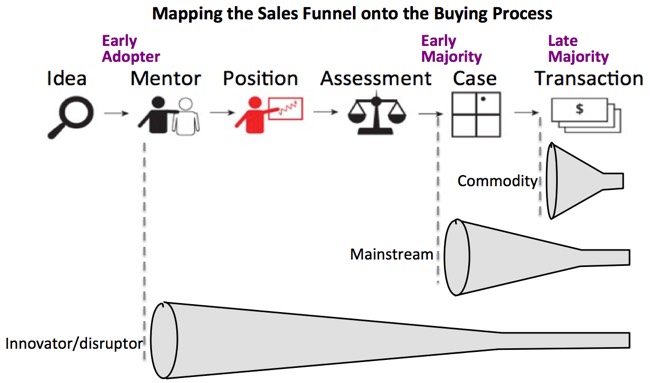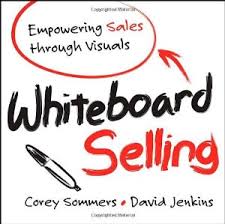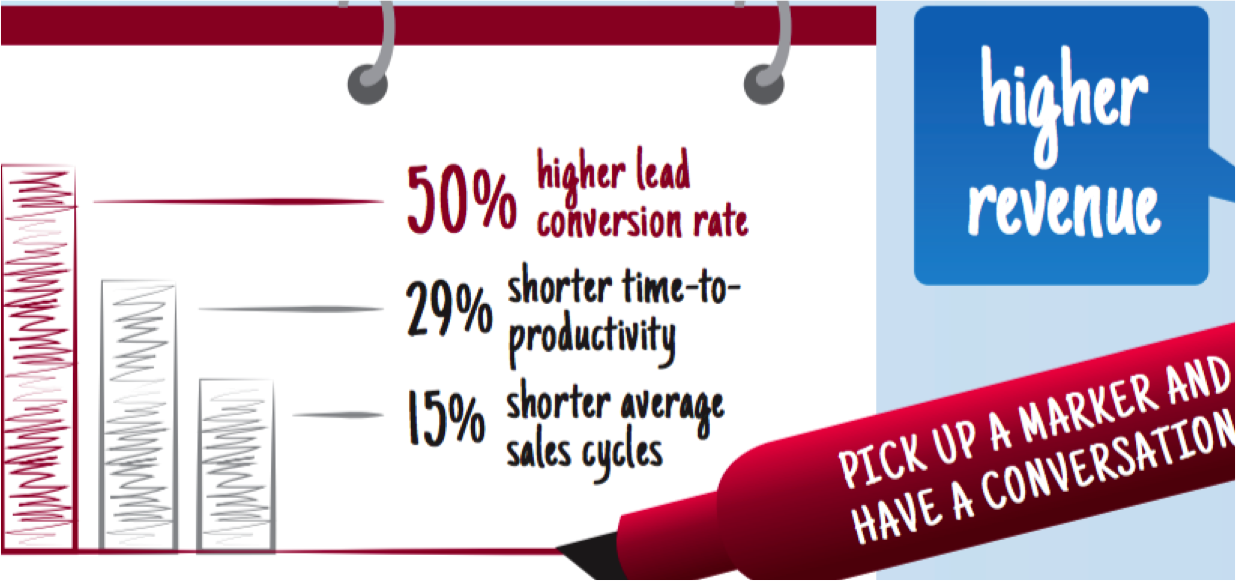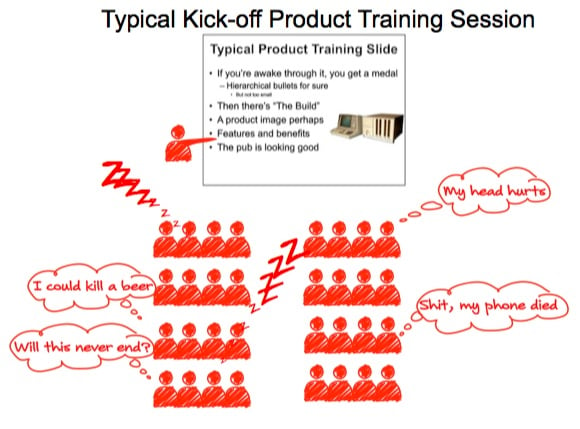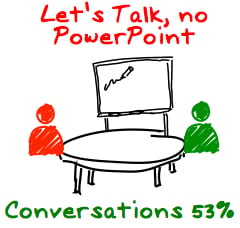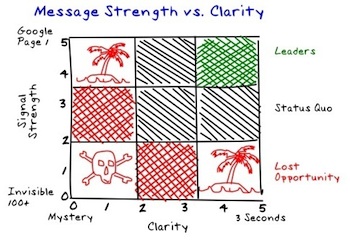PowerPoint Sales Presentation
Sales and marketing industry experts have been talking about how ineffective Power Point presentations are at building audience engagement and accurately conveying information for years now. Perhaps the most vocal critic is
Edward Tufte, author of the widely acclaimed "Presenting Data and Information" books and lecture series.
So why does it seem that we’re being subjected to more bland deliveries than ever?!
PowerPoint’s failings as a medium for sales presentation have already been well-established. When used in today’s standard fashion, Power Point:
- Inhibits engagement and audience rapport,
- Muddles the transfer of information, and
- Diminishes salesperson effectiveness.
It’s easy to imagine the mechanisms by which PowerPoint inhibits audience engagement – simply think back to the last time you sat through a text-heavy, read-directly-from-the-screen slideshow-style Powerpoint presentation. Basically, when you put all of your relevant information onto slides that can be easily read in advance by your audience members, you eliminate the incentive for them to follow along and actually engage with the information you’re sharing...in fact why bother showing up...you can send it advance, they can read it without you and they can call you if they need you.
At the same time, the physical limitations of a poorly-given PowerPoint presentation diminish rapport and reduce message retention. Because most PowerPoint slides are read – word-for-word – by their presenters, a connection (which is often founded on eye contact and body language) can’t be formed between audience and presenter. The result – as you might expect – is a room full of tuned-out attendees, discreetly trying to check their mobile devices instead of listening intently to your pitch.
Overall, though, the biggest hindrance to salesperson effectiveness is a reliance on Powerpoint to tell their story. In many cases, Power Point encourages
comfort-zone selling. After all, there’s no reason to learn and master delivery of your company’s sales message when it’s printed on slides right in front of you!
An illustration of why this matters, imagine two sales people – one who depends upon a PowerPoint presentation to lead client meetings and one who’s embraced his company’s sales message to the point where he’s comfortable expounding upon it in a free-form manner.
Which of these sales people do you think will be better prepared to deliver an effective conversation with a buyer in the face of unforeseen circumstances (for example, a lost USB memory stick or a broken projector)? Which do you think will be better prepared to ad-lib when needed in order to address unique or unexpected questions and concerns brought up by prospective customers?
The bottom line is that, if you’re relying on Power Point to give your sales presentations, you’re leaving an awful lot of opportunity on the table!
So if you can’t use the corporate world’s most treasured presentation tool, what options exist when it comes to delivering engaging sales presentation without Power Point? Consider any of the following options:
Whiteboard Selling
As a partner of Whiteboard Selling, I'm a user of the methodology, author of nearly 30 whiteboards and have trained thousands of salespeople to use the whiteboard to tell their story. I still use Powerpoint from time to time, but merely to project an image...I am telling the story, it's my ideas and me that people have come to see and listen to.
The whiteboaring presentation style works because it appeals to both the left and right sides of our brains. The hand-drawn illustrations delight our visual sense, while spoken words and facts give our analytical sides the data they need to be satisfied. The result is a message retention rate that’s much higher than audio or visuals alone – not to mention, significantly improved over traditional Power Point presentations.
As an added bonus, whiteboarding creates more effective sales people. What happens when a company adopts whiteboard storytelling as its presentation and buyer engagement medium? When sales management executives hold their sales team accountable to achieving mastery and then certifies them as competent and confident in delivering the whiteboard story, they elevate the performance of their sales team. When sales representatives know their story inside and out, - I call it the Zen state... they can engage buyers and influence opinions through delivering relevant information in a seemingly-casual manner.
Message ownership means that salespeople can engage buyers in conversations that are relevant to each client’s needs – anytime, anywhere.
Hands-on Demonstrations
Another effective alternative to PowerPoint is the hands-on demonstration.
Obviously, this style won’t be a possibility for all products or services, but it’s a great option if you are selling, hand-held or portable items or software. Marketing experts like to say, “Show me – don’t tell me,” and there’s a reason for that. Giving prospective customers the opportunity to interact with your product in a live environment is one of the most engaging, effective ways to showcase capabilities and guage buyer interest.
Conversations
Conversations where salespeople lead with an informed opinion about the buyer condition are extremely effective. Simply sitting down at the conference room table and telling your future customers, “Let’s talk about your business,” is an easy-to-implement alternative to traditional Power Point slideshows, disarms the buyer and creates wonderful opportunity for rapport and trust to develop.
The benefits of this approach are two-fold. Not only do people love to talk about themselves (and will be flattered that you care more about their individual needs than about sticking to a standard or custom Powerpoint whipping), leading with an opinion backed by your and your company experience opens up a World of possibility that you may never achieve in presentation mode.
By taking the time to actually engage your prospective customers – rather than berate them with boring slides and empty talking points – the odds that you’ll be able to build rapport and convey your sales message effectively increase significantly.
Resources
Download the Whiteboard Selling Best Practices Guide
Read how the leading Virtualization company transformed its sales culture with Whiteboard Selling.
Get the New Whiteboard Selling Whitepaper



